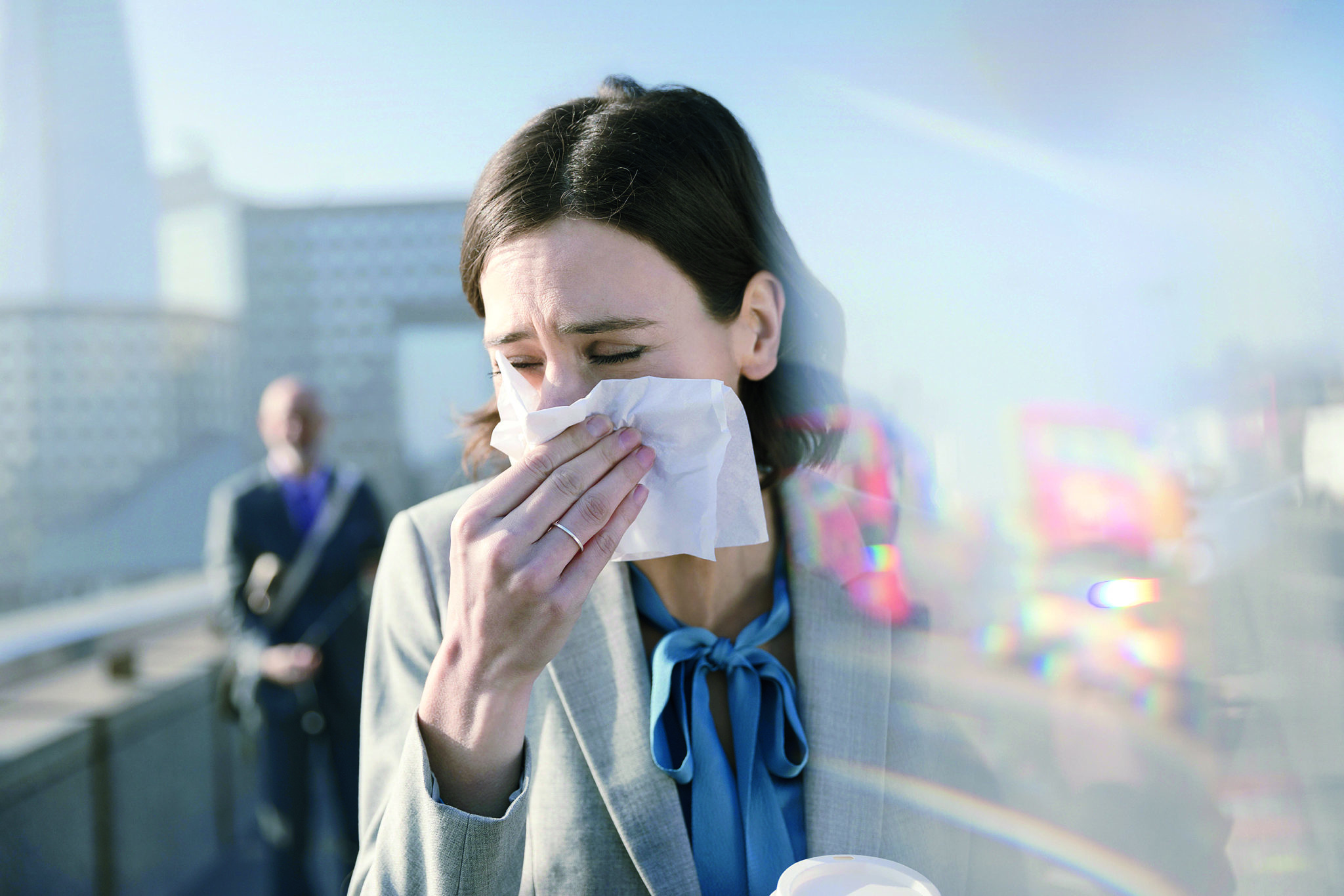It was during her medical training to become an allergist that Naba Sharif learned she had one allergy: to cockroaches. She and her peers were learning how to do allergy testing, practicing on one another, and the only thing that turned up positive for her was this, an allergy to a 300-million-year-old bug that predates dinosaurs and can live for days without its head.
Sharif, who is now a board-certified allergist at Asthma, Allergy & Sinus Center of Waldorf, wasn’t allergic to cockroaches before moving to New York City for medical training. She grew up near Poughkeepsie, where the insects aren’t as common as they are in an urban environment, so she was never desensitized to them, which is often how allergies work—you get exposed to something in childhood, such as a dog, and don’t develop an allergy to it later on because of the early exposure.
Technically, an allergy is a sensitivity to a foreign trigger that, when it hits the skin or nasal passage or eye, causes the immune system to perk up and create antibodies. This army of antibodies stays on call until they encounter the allergen again, at which point they tell the immune system to attack it with an onslaught of chemicals that produce unpleasant symptoms: itchiness, sneezing, watery eyes, vomiting, all in an attempt to expel the allergen.
While allergies in the environment are largely seasonal, such as tree pollen, the cockroach allergy is year-round, says Sharif. And despite the pest’s impressive tenure on Earth, the allergy to it is a relatively modern discovery, first identified by researchers in 1964. The reaction isn’t actually to the roach itself but rather to proteins found in its droppings, saliva, and dead body, which become airborne and can cause an allergic reaction when inhaled. In studies that look at cockroach allergies, their presence is often measured by sampling clumps of dust from forgotten corners.
If right about now you’re thinking, “I’m not allergic to cockroaches,” just know that according to a 2017 report published by the National Institutes of Health, between 17 and 41 percent of the US population has an allergy to those very things and that 85 percent of city homes contain cockroach allergens. By comparison, allergies to cats affect 17 percent of Americans, while 10 percent are allergic to dust mites.
“Cockroaches are everywhere,” says Sharif, meaning not just in damp basements or abandoned buildings but also in glossy high-rises where they scurry across lobbies at night. “Most of the time, you don’t even see roaches because they’re nocturnal,” she adds. “But if you do even see one roach, there are at least 800 that you aren’t thinking about.” According to Sharif, the cockroach allergy is more common in DC. The city’s dense population, humid summers, and burgeoning infrastructure create a welcome playground for cockroaches, which love warmth and water and will eat pretty much anything, from cardboard to hair to the glue that binds books.
There are about 4,500 species of cockroaches worldwide, but just four are particularly troublesome: the German, American, Australian, and Oriental. The most common in our area are the German and American, with the latter being the largest and most nimble, likely to be seen scampering down the sidewalk at night (or taking flight—it has wings). Despite its name, it isn’t actually native to the US. It arrived by ship from Africa in 1625 and thrived on plantations around Washington, hopping carriages and spreading throughout the country.
Says Sharif: “The reason it’s such a public-health problem—and you wouldn’t say that about pollen, right?—is that kids with chronic exposure to cockroach allergens actually can get asthma, or it can worsen symptoms in patients who have asthma.”
Burcin Uygungil, an allergist-immunologist at Children’s National, says that for kids, “the biggest problem is school,” an environment out of parents’ control. For children already experiencing asthmatic symptoms–coughing, shortness of breath, wheezing—exposure to roaches in school or daycare can cause severe attacks. One study showed that kids already diagnosed with a cockroach allergy were hospitalized 3.3 times more often than other children, including those with dust-mite or cat allergies.
Cockroaches are everywhere. Most of the time, you don’t even see roaches because they’re nocturnal.
To test for a cockroach allergy, Uygungil does a skin-prick test that covers a mini-panel of allergies to roaches, dust mites, cats, dogs, mice, rats, and pollen. If a cockroach reaction is detected, a person might be put on antihistamines or given a nasal spray or eyedrops. While most treatments are available over the counter these days, an allergist can tailor a plan for each patient, because allergic reactions fall on a spectrum, or issue a long-term solution such as an allergy shot.
Unfortunately, because a cockroach allergy is environmental, nothing can be done to prevent developing it among those who are prone. “No one is born with it,” says Uygungil, adding that you do have to have the potential to develop allergies, such as a genetic predisposition or non-exposure as a child.
Besides seeking treatment from an allergist, a patient should treat his or her environment as well, says Sharif, and can find the solution at the dollar store: roach bait. In a yearlong randomized trial, homes using bait as an intervention were cockroach-free after 12 months, and asthmatic children living in these homes had better lung function and fewer visits to the doctor’s office. “Baits don’t just capture the cockroach,” says Sharif. “Most have some sort of poison in them, so the cockroach comes in and eats it, rolls around in it, and then goes back to those crevices where people aren’t looking, back to their homes, and all the cockroaches are exposed. And they die.”
You can take other simple measures, too, such as not bringing food into the bedroom, fixing leaky pipes, and snapping the lid on the trash can. “Even doing just one of these things,” she says, “significantly reduces the number of cockroaches around.”
This article appears in the April 2019 issue of Washingtonian.



















